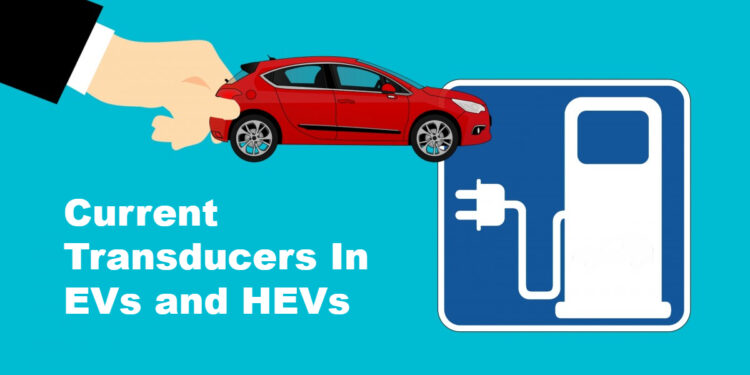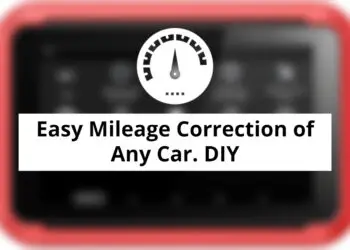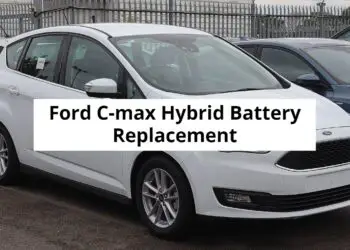In this article, we will talk about the important elements of the propulsion system, specially, current transducers In EVs and HEVs.
Batteries accumulate energy in the form of a DC charge. But since most of the engines run on alternating current energy needs to be converted. Such a need also arises when energy is fed back into the battery that is, with regenerative braking.
Besides, the electric power generated by the electric motor has a high voltage. usually, more than 100 V. To store this energy in the battery, the voltage must be reduced to the level used in the conventional batteries (12 or 24 V). For these purposes, various DC voltage converters and inverters are used.
Today we will examine the main energy converters that are used in electric vehicles and hybrid electric vehicles. The figure on the slide shows the overall configuration of electric vehicles and hybrid electric vehicles.
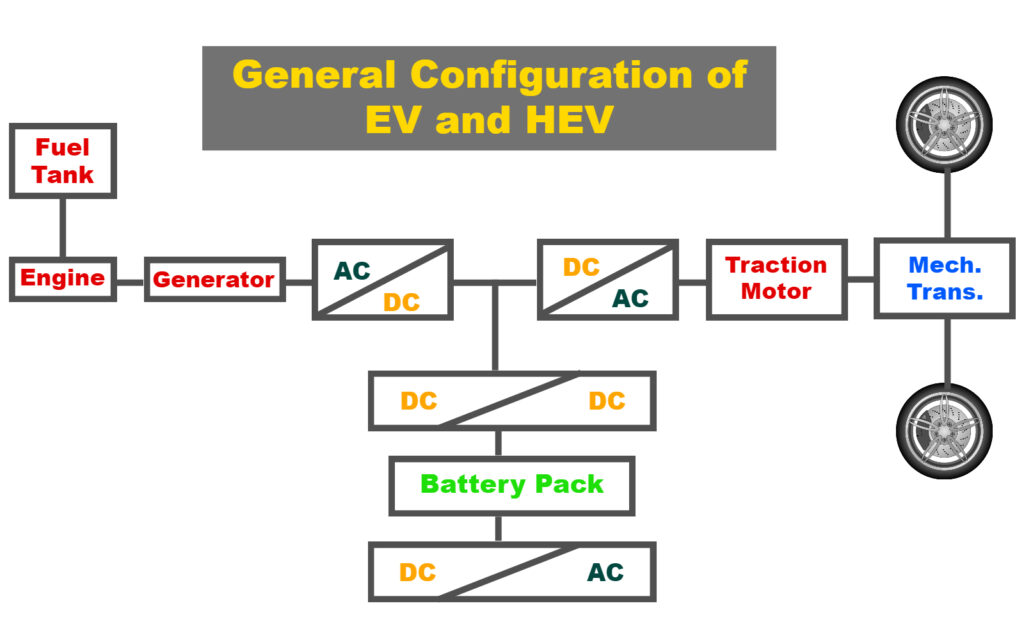
Here you can see that there are three main power electronic units in a propulsion unit of EV and HEV:
- DC-DC converters
- DC-AC inverters
- AC-DC rectifiers
DC-DC converters
The main task of the DC-DC converter is to change the voltage (AC or DC) of the power supply. Behind the topology, there are 3 types of voltage converters.
- Buck converters
- Boost converters
- Buck-Boost converters
- Cuk converters
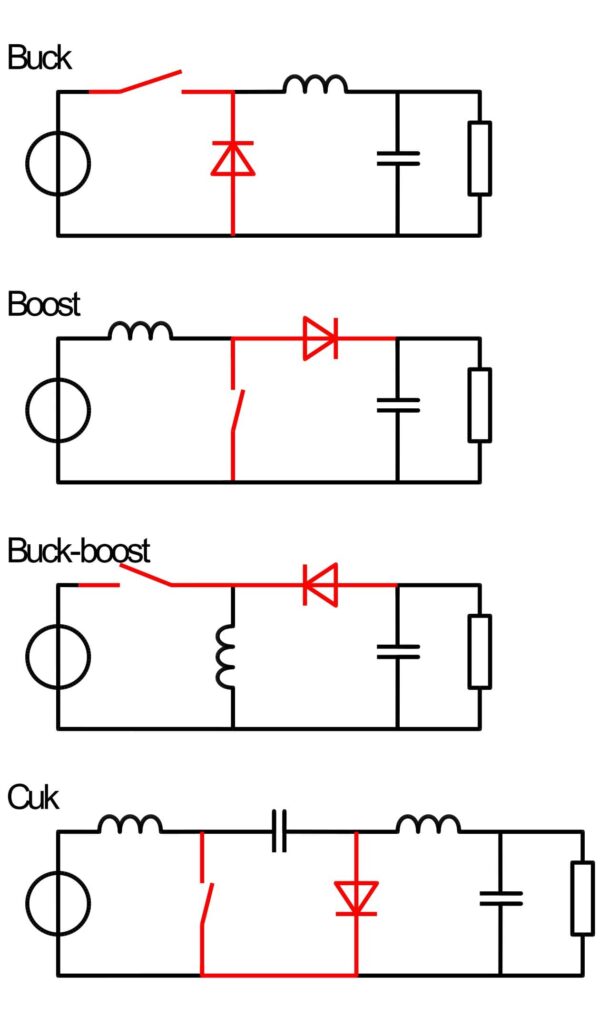
Buck converters
A buck converter is a step-down converter, and it produces a lower average output voltage than the DC input voltage. We call this circuit a “Buck Converter”.
We can control the value of the DC output voltage at the light bulb by controlling the percentage of time that this switch is on. This allows us to create any DC voltage at the light bulb that is lower the voltage of the battery.
Assuming that we had ideal components, this circuit would be 100% efficient. We are thinking of the transistor as an ideal switch. An ideal diode can also be thought of as a switch.
Advantages of buck converters:
- Buck regulator is very simple and it requires only one transistor (switch).
- It has high efficiency. (Efficiency is about 90%.)
- Low cost and size.
- Large tolerance of line voltage variation.
Disadvantages of buck converters:
- The only unidirectional output is available.
- High output ripple.
- Slow transient response.
- An input filter is normally required.
Boost converters
A boost converter output voltage is always greater than the input voltage. Suppose we keep turning the switch on and off. By continuously turning the switch on and off. we have created a DC output voltage at the light bulb that is higher than the voltage of the battery. We call this a “Boost Converter”.
We can control the value of the DC output voltage at the light bulb. by controlling the percentage of time that this switch is on. Let’s look at these advantages and disadvantages.
Advantages of boost converters:
- It can step up the output voltage without a transformer.
- And a high efficiency due to a single switch.
Disadvantages of boost converters:
- High peak current flows through to switch (MOSFET).
- The output voltage is highly sensitive to changes in the duty cycle.
- Large inductance and capacitance are required.
Buck-Boost converters
Buck-Boost converter can be used as a boost converter from the battery to DC link power flow, and as a buck converter when the flow is reversed.
Advantages of buck-boost converters:
- Provides inverted output.
- Second. Both buck/boost operations simultaneously.
- Third. High efficiency.
- And fourth. Short circuit protection can be easily implemented.
So we figured out the basics of the classification of DC-DC converters, and now move on to the next classification. The most common DC-DC converter used in electric and hybrid electric vehicles can be classified according to the direction of the electrical parameters being converted.
Unidirectional converters
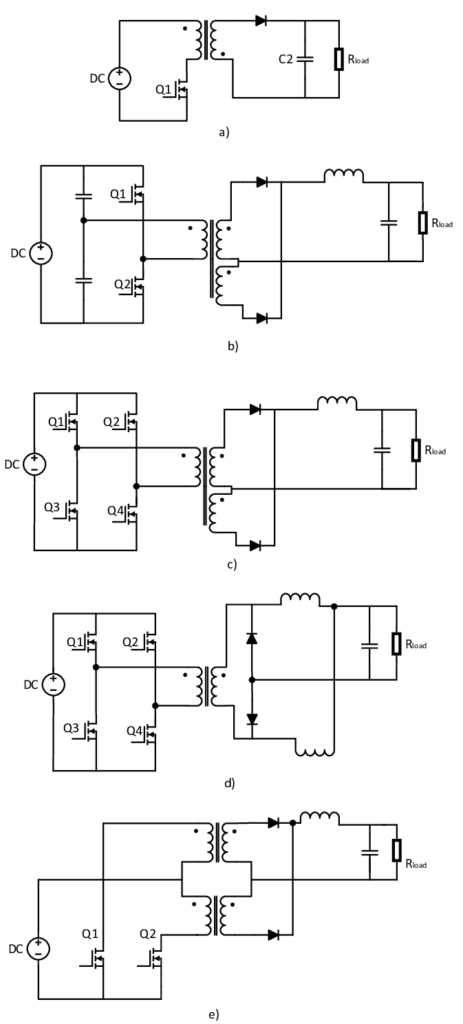
Unidirectional converters provide service to various onboard loads such as sensors, controls, entertainment, utility, and safety equipment
Bidirectional converters
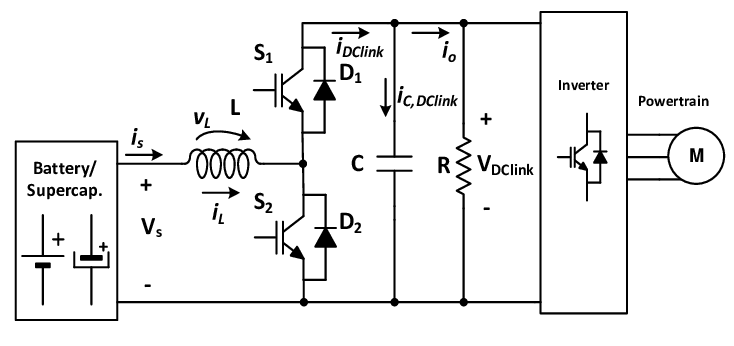
Bidirectional converters are used in places where battery charging (direct conversion) and regenerative braking (inverse transform) is required.
The power flow in a bi-directional converter is usually from a low voltage end, such as a battery or a supercapacitor, to a high voltage side, and is referred to as boost operation.
During regenerative braking, the power flows back to the low voltage bus to recharge the batteries, i.e. the buck mode operation is on.
DC -AC inverters
Now let’s take a look at DC -AC inverters. So, the main source of electricity is the battery, which is a source of direct current. The output DC electrical parameters of the battery are increased or decreased per the requirement, using a DC-DC inverter. But the current remains constant, while the traction motor requires an alternating current supply. Therefore, there is a need to use another energy converter, which is called a DC-AC inverter.
The function of the inverter is to change the input DC voltage to an asymmetrical AC output voltage of the desired size and frequency. The output voltage waveform of an ideal inverters should be sinusoidal.
However, the waveforms of practical inverters are not sinusoidal and contain certain harmonics.
AC -DC rectifiers
An AC-DC rectifier is a device similar to a DC-AC inverter, except that it does the opposite, converting AC power to DC power.
Summary
- The main task of the DC-DC converter is converting voltage. That is, it is an electrical device that changes the voltage of the power supply. It either raises or lowers it.
- An inverter is an electrical device that converts electricity derived from a DC source to AC of the type that can be used to drive a device or appliance.
- A rectifier has the job of converting the alternating voltage of the alternator into a direct voltage for charging the battery.
- DC/AC and DC/DC converters are often combined with other electronic components of the system in a power electronics module.
This is the basic information on this topic. We may and will consider current transducers and the principle of their work in more detail in another article. We hope that everything was simple and as clear as possible. Feel free to ask any questions if you have. The comment section is always open for you. Goodbye!
You may like to read: In-Depth Study – Traction Motors of EVs
